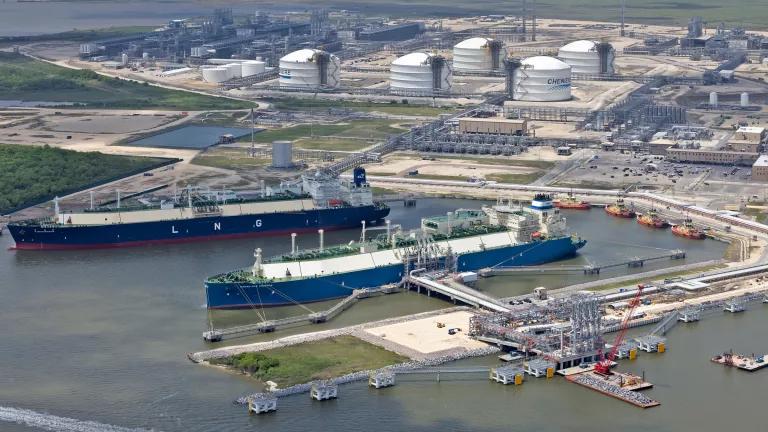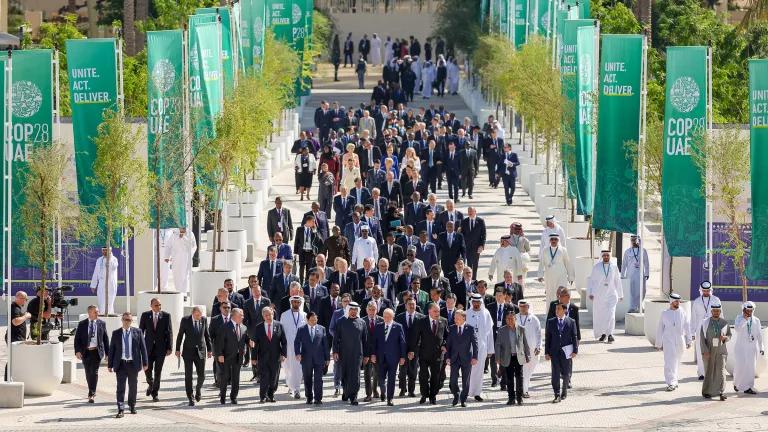The Questionable Future of Overseas Coal Investments
If public and private institutions alike continue to finance new coal capacity, it will be impossible to achieve climate goals. It is very clear that coal is not an environmentally viable option.

This blog was co-authored with Jessica Norris and Lily Hartzell
In July 2018, we wrote about the continued financing of coal plants abroad, noting that at the time there were roughly 58 gigawatts (GW) of proposed overseas coal power plants likely to receive financing. While some projects have stalled or been cancelled, new projects are now under consideration. The pipeline of projects likely to receive foreign public funding is now at about 67GW. While it is encouraging that many pending projects are stalling or being cancelled outright, there are still far too many in the pipeline and new ones popping up. China, South Korea, and Japan remain the most likely financiers of future coal projects abroad.
This is, unfortunately, consistent with previous trends in financing for coal plants, with China, Japan and Korea leading the charge:

The top potential recipients of financing for coal projects are the following countries, ranked in order of total planned capacity of coal projects.

Changes in Coal Investments in 2018
According to our analysis, in the latter half of 2018 the only major new coal project added to our pending list was the Power China International Energy Project in Limpopo, South Africa. President Ramaphosa agreed to the deal at the Forum on China-Africa Cooperation (FOCAC) meeting held in Beijing in September 2018. The plan is to build a 4,600 MW plant over 6 years that will primarily power a Chinese-owned industrial park. Otherwise, while the 1200 MW Nghi Son 2 plant moved into financial close, others have remained stalled, or been put on hold. The Cirebon Phase 3 expansion, a 1000 MW project in Indonesia funded primarily by South Korean bank KEXIM, has not only been suspended, there are indications that it will be turned into a renewable energy project. An anonymous source within Korea Midland Power (KOMIPO) stated that this is because the Indonesian Government did not reflect the plant in its power supply and demand plan and that changes in the financial industry also played a role. The World Bank announced it was no longer considering the last coal project that was in its pipeline, the ContourGlobal coal project in Kosovo. Unfortunately, the company has turned to the United States’ Overseas Private Investment Corporation to try and secure funding for this project, even though OPIC’s Environmental and Social Policy Statement make it highly unlikely such a project could get funded, and it has been over 5 years since OPIC was involved with any coal projects.
In 2017, there was a high level of financing for coal projects. Our data through mid-2018 indicates that so far, there have been fewer coal projects publicly financed, but given the limited transparency of some of the financial institutions involved, there are potentially projects in 2018 (or earlier) which are not yet recorded in our database.

Protests of Controversial Coal Projects
This move follows years of controversy and local protests against the Cirebon plant, with residents complaining about the pollution and its health impacts on residents and damage to the local fishing industry. In 2016, a legal challenge to the Cirebon Phase 2 expansion was filed by the People for Environmental Protection (RAPEL) and the Advocacy Team for Climate Justice. In April 2017, the West Java civil court revoked Cirebon 2’s environmental permit on the grounds that it was in violation of local planning laws. Unfortunately, Cirebon 2 obtained a new environmental permit in October 2017, and construction broke ground soon after. Since then, farmers in the area have been criminalized for speaking out about environmental permits for Cirebon and another plant, the Idramayu Power Station. Some have even been arrested and detained for “insulting the national flag,” though they have stated that this is false accusation with the goal of silencing their protests. The legal fight against Cirebon 2, along with continued tensions between locals and law enforcement in the area, makes the 2018 decision to transform Cirebon 3 into a new and renewable energy project particularly notable. Along with the Cirebon 3 announcement, the CEO of Korea Western Power (KWP) announced that KWP would consider converting the Quang Tri-2 power station, a 1200 MW project in Vietnam, to renewables as well.
Financial Institutions Are Shifting Away from Coal Investments
Two Korean pension funds with over $20 billion USD in assets have announced they will not support project finance or related corporate bonds used for building coal power plants at home or abroad. It is not only in Korea that financial institutions are beginning to shift away from coal investment. In Japan, where the government has taken on a notably pro-coal stance since Fukushima, it looks like a shift away from coal may be possible. Early this year, both the Dai-ichi Life Insurance Company and the Nippon Life Insurance Company announced that they would end all new project financing for overseas coal plants. By September, Japan’s three largest banks took an initial step away from coal, with the Mitsubishi UFJ Financial Group, the Sumitomo Mitsui Banking Corporation, and the Mizuho Financial Group all announcing that they would not finance any coal projects that are not “high-efficiency coal.” Marubeni, a major Japanese financial conglomerate, also announced that it would no longer support new coal plants, and that it will cut its coal power generating capacity in half by 2030. While the new coal restrictions are not doing enough to limit the expansion of Japanese coal projects domestically and overseas, establishing restrictions on project finance are a step in the right direction. It also shows that these companies are at least concerned about their reputation for financing dirty coal projects, even if they are not yet concerned enough to take meaningful action to end coal financing.
Coal Projects Are Not Compatible with a 1.5°C World
In October 2018 the UN’s Intergovernmental Panel on Climate Change (IPCC) released an alarming report on the status of climate change and specifically on the science behind preventing warming beyond 1.5°C. The priority, according to the report, must be a decline in CO2 emissions, ideally a reduction of about 45% from 2010 levels by 2030 and net zero emissions by 2050. One pathway to achieve such massive reductions would require coal usage to decrease 78% from 2010 levels by 2030. Renewable energy must also see significant growth, supplying 47-65% of electricity by 2030. Given these constraints on fossil fuel growth, it is clear that continued investment in coal is not an environmentally sustainable option. If public and private institutions alike continue to finance new coal capacity, it will be impossible to achieve climate goals. It is very clear that coal is not an environmentally viable option. According to an Oxford study, about 88% of existing and planned coal-fired power plants in Southeast Asia are incompatible with a 1.5° climate change scenario.
Coal Projects Are Risky, Stranded Assets
Furthermore, rational investors cannot argue that coal is a safe or secure investment. According a Carbon Tracker study, as much as $60 billion USD of coal power assets may be stranded across Southeast Asia in the next decade. According to Bloomberg New Energy Finance (BNEF) projections, while presently coal makes up about 33% of all power generating capacity worldwide, this number “crashes to just 5%” by 2050. This reduction will be largely thanks to slowing installations and increasing numbers of coal plant closures. BNEF predicts that over half of current pending pre-construction coal plants will not be built at all. Additionally, solar and wind energy sources will continue to become increasingly competitive with not only new coal projects, but also with operations of existing coal projects – driving even more retirements of coal.
Many Countries Are Moving Past Coal
One example of a trend towards more viable renewable energy sources is the Powering Past Coal Alliance (PPCA), a grouping of countries, regions, cities, and businesses all committing to phase-out coal power plants in their specific area, (or in the case of businesses to stop using coal power.) In October 2018, South Korea’s South Chungcheong Province joined the alliance, becoming the largest coal power consumer and the only region in Asia to join. As we have discussed previously, this decision indicates that an energy transition is indeed possible in Asia. The choice to halt the Cirebon 3 coal plant in Indonesia, South Chungcheong’s membership with the PPCA, and Japan’s corporate movement against new coal investments are all part of a positive trend away from coal, and towards a new energy transition. However, none of these actions alone is enough.
The Future of Coal Projects
Questions remain about whether Japan and Korea are skirting the recent OECD Coal Sector Understanding that restricts financing for coal plants abroad, finding loopholes to continue building coal plants overseas. And as China’s Belt and Road Initiative (BRI) progresses, its overseas investments also require a hard look, given the large number of coal investments China has made in Belt and Road countries. In Japan, it is time to reconsider the Abe government’s preferences for coal-fired power plants and for the government to help emphasize new and renewable energy development. There is no satisfactory justification for the construction of additional overseas coal plants—given what we know about the long term economic risks, health costs of coal, and climate implications from highly-polluting coal plants. Building new coal capacity anywhere in the world is counter to both environmental and economic goals.
Download the newest coal public finance database here.



